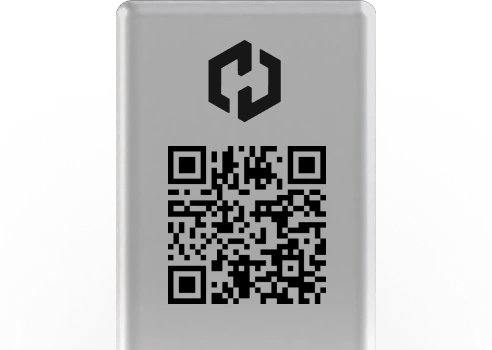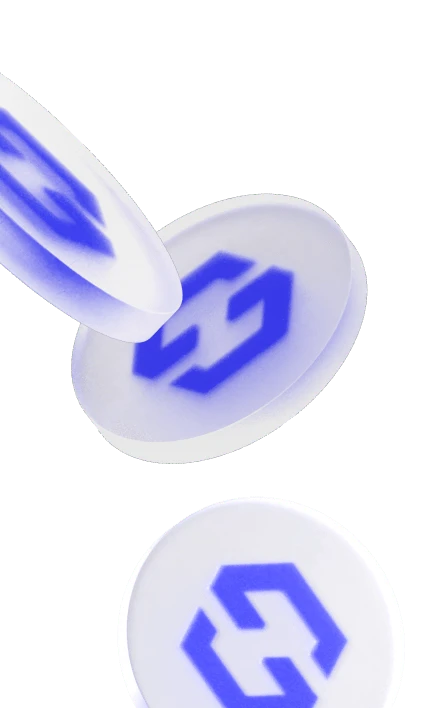Investir dans
la crypto avec Coinhouse
Rapport de durabilité
La nouvelle règle du jeu pour une finance responsable.

Depuis 2024, la réglementation européenne exige que chaque entreprise financière publie des indicateurs de durabilité qui offrent une vision transparente de l'impact environnemental de ses activités.
En quelques mots, ces indicateurs prouvent qu'une entreprise agit concrètement pour la planète.
Explorez ci-dessous les indicateurs de durabilité des crypto-actifs sélectionnés par notre plateforme.

Sustainability report
The new rule of the game for responsible finance.
Arweave (AR)
General Information
| Reporting entity name | Coinhouse SAS |
| Legal Entity Identifier (LEI) | Company LEI |
| Crypto-asset name | Arweave |
| Consensus mechanism | Arweave is present on the following networks: Arweave, Ethereum. |
| Incentive mechanisms and applicable fees | Arweave is present on the following networks: Arweave, Ethereum. |
| Start of reporting period | 2024-06-22 |
| End of reporting period | 2025-06-22 |
Environmental (E)
| Total energy consumption (kWh/year) | 629406.87903 |
| Energy consumption sources and calculation methodologies | The energy consumption of this asset is aggregated across multiple components: |
| Share of renewable energy consumption (%) | 24.134706333 |
| Energy intensity (kWh/transaction) | 0.00000 |
| Scope 1 GHG emissions (tCO₂e) | 0.00000 |
| Scope 2 GHG emissions (tCO₂e) | 259.31309 |
| GHG emissions intensity (gCO₂e/tx) | 0.00000 |
| Key energy sources and methodologies | To determine the proportion of renewable energy usage, the locations of the nodes are to be determined using public information sites, open-source crawlers and crawlers developed in-house. If no information is available on the geographic distribution of the nodes, reference networks are used which are comparable in terms of their incentivization structure and consensus mechanism. This geo-information is merged with public information from Our World in Data, see citation. The intensity is calculated as the marginal energy cost wrt. one more transaction. |
| Key GHG sources and methodologies | To determine the GHG Emissions, the locations of the nodes are to be determined using public information sites, open-source crawlers and crawlers developed in-house. If no information is available on the geographic distribution of the nodes, reference networks are used which are comparable in terms of their incentivization structure and consensus mechanism. This geo-information is merged with public information from Our World in Data, see citation. The intensity is calculated as the marginal emission wrt. one more transaction. |
Arweave is present on the following networks: Arweave, Ethereum.
Arweave employs a unique Proof of Access (PoA) consensus mechanism, which integrates a requirement for miners to provide cryptographic proof of access to historical data, known as a « recall block. » This ensures that miners contribute to both data storage and network security by storing and verifying historical data. Core Components: 1. Proof of Access (PoA): Recall Block Verification: During mining, miners must retrieve and validate a randomly selected « recall block » from Arweave’s data history, proving they retain access to stored data. This process secures the network while emphasizing long-term data availability. Enhanced Proof of Work (PoW): PoA builds upon traditional PoW by requiring miners to demonstrate access to previously stored data, adding a storage-focused layer to network security and incentivizing distributed data retention. 2. Data-Centric Mining Incentives: Distributed Storage: The PoA design encourages miners to store a broad history of blocks, as possessing more recall blocks enhances their probability of successfully mining new blocks and earning rewards.
The crypto-asset’s Proof-of-Stake (PoS) consensus mechanism, introduced with The Merge in 2022, replaces mining with validator staking. Validators must stake at least 32 ETH every block a validator is randomly chosen to propose the next block. Once proposed the other validators verify the blocks integrity. The network operates on a slot and epoch system, where a new block is proposed every 12 seconds, and finalization occurs after two epochs (~12.8 minutes) using Casper-FFG. The Beacon Chain coordinates validators, while the fork-choice rule (LMD-GHOST) ensures the chain follows the heaviest accumulated validator votes. Validators earn rewards for proposing and verifying blocks, but face slashing for malicious behavior or inactivity. PoS aims to improve energy efficiency, security, and scalability, with future upgrades like Proto-Danksharding enhancing transaction efficiency.
Arweave is present on the following networks: Arweave, Ethereum.
Arweave’s economic model incentivizes miners to contribute to data storage through upfront storage fees and ongoing block rewards, supporting the network’s mission of providing permanent and accessible data storage. Incentive Mechanisms: 1. One-Time Storage Fees: Permanent Data Storage: Users pay a one-time, upfront fee in AR tokens, calculated based on data size and projected storage costs. This fee funds indefinite data storage on the network. Endowment Pool: A portion of each storage fee is allocated to an endowment pool, covering future storage costs as technology advances, ensuring sustainable, permanent data storage. 2. Mining Rewards: Block Rewards: Miners earn AR tokens for successfully mining blocks, incentivizing them to store historical data and maintain network integrity. Applicable Fees: 1. Data Storage Fees: Market-Based Cost: Storage fees in AR are set by data size and projected long-term costs, covering the initial and future costs of data permanence.
The crypto-asset’s PoS system secures transactions through validator incentives and economic penalties. Validators stake at least 32 ETH and earn rewards for proposing blocks, attesting to valid ones, and participating in sync committees. Rewards are paid in newly issued ETH and transaction fees. Under EIP-1559, transaction fees consist of a base fee, which is burned to reduce supply, and an optional priority fee (tip) paid to validators. Validators face slashing if they act maliciously and incur penalties for inactivity. This system aims to increase security by aligning incentives while making the crypto-asset’s fee structure more predictable and deflationary during high network activity.
The energy consumption of this asset is aggregated across multiple components:
For the calculation of energy consumptions, the so called “bottom-up” approach is being used. The nodes are considered to be the central factor for the energy consumption of the network. These assumptions are made on the basis of empirical findings through the use of public information sites, open-source crawlers and crawlers developed in-house. The main determinants for estimating the hardware used within the network are the requirements for operating the client software. The energy consumption of the hardware devices was measured in certified test laboratories. When calculating the energy consumption, we used – if available – the Functionally Fungible Group Digital Token Identifier (FFG DTI) to determine all implementations of the asset of question in scope and we update the mappings regulary, based on data of the Digital Token Identifier Foundation.
To determine the energy consumption of a token, the energy consumption of the network(s) ethereum is calculated first. For the energy consumption of the token, a fraction of the energy consumption of the network is attributed to the token, which is determined based on the activity of the crypto-asset within the network. When calculating the energy consumption, the Functionally Fungible Group Digital Token Identifier (FFG DTI) is used – if available – to determine all implementations of the asset in scope. The mappings are updated regularly, based on data of the Digital Token Identifier Foundation.
To determine the proportion of renewable energy usage, the locations of the nodes are to be determined using public information sites, open-source crawlers and crawlers developed in-house. If no information is available on the geographic distribution of the nodes, reference networks are used which are comparable in terms of their incentivization structure and consensus mechanism. This geo-information is merged with public information from Our World in Data, see citation. The intensity is calculated as the marginal energy cost wrt. one more transaction.
Ember (2025); Energy Institute – Statistical Review of World Energy (2024) – with major processing by Our World in Data. “Share of electricity generated by renewables – Ember and Energy Institute” [dataset]. Ember, “Yearly Electricity Data Europe”; Ember, “Yearly Electricity Data”; Energy Institute, “Statistical Review of World Energy” [original data]. Retrieved from https://ourworldindata.org/grapher/share-electricity-renewables
To determine the GHG Emissions, the locations of the nodes are to be determined using public information sites, open-source crawlers and crawlers developed in-house. If no information is available on the geographic distribution of the nodes, reference networks are used which are comparable in terms of their incentivization structure and consensus mechanism. This geo-information is merged with public information from Our World in Data, see citation. The intensity is calculated as the marginal emission wrt. one more transaction.
Ember (2025); Energy Institute – Statistical Review of World Energy (2024) – with major processing by Our World in Data. “Carbon intensity of electricity generation – Ember and Energy Institute” [dataset]. Ember, “Yearly Electricity Data Europe”; Ember, “Yearly Electricity Data”; Energy Institute, “Statistical Review of World Energy” [original data]. Retrieved from https://ourworldindata.org/grapher/carbon-intensity-electricity Licenced under CC BY 4.0










